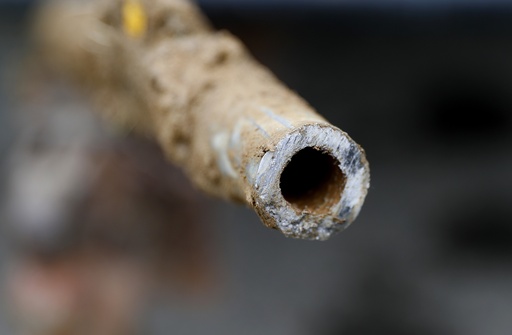
ST. LOUIS — According to a recent report by the Inspector General, the Environmental Protection Agency (EPA) is likely to misallocate close to $1 billion intended for lead pipe replacement due to unverified and inaccurate data provided by Texas and Florida. The report highlights that while the agency may be able to rectify some misguided allocations and recover funds already distributed incorrectly, the discrepancies imply that states with significant needs may face delays or receive lower amounts than they require.
The EPA has contested the findings of the Inspector General, asserting that they made efforts to balance the rapidly changing information on lead service lines across states while also striving to promptly distribute money from the Bipartisan Infrastructure Law. The agency has committed to revisiting the allocation plans for Texas and Florida.
Central to this issue is an unprecedented survey conducted by the EPA, which sought estimates from local authorities regarding the number of lead pipes in their respective states. States like Illinois and Michigan, known for their extensive industrial histories, are believed to have a higher prevalence of lead pipes compared to others. The Bipartisan Infrastructure Law allocated $15 billion specifically for the identification and replacement of lead pipes, with the survey intended to ensure that states with the most lead pipes received an appropriate share of the funding.
However, the Inspector General reported that the EPA did not verify the data from states, and it identified significant errors in the information submitted by Texas and Florida. Specifically, an error in data entering by a Houston official led to Texas receiving nearly $120 million more than what was warranted for the 2023 fiscal year. Even when informed about this mistake, the state failed to notify the EPA, further complicating the situation.
Tom Neltner, the national director of the nonprofit Unleaded Kids, remarked, “Florida made serious errors and Texas was uncooperative.” These findings come shortly after the Biden administration implemented a sweeping regulation requiring most cities to remove lead pipes within a ten-year timeframe, underscoring the complexities involved in such initiatives. Lead exposure is known to adversely affect children’s brain development and raise blood pressure in adults, with estimates suggesting that replacing the national supply of around 9 million lead pipes could cost between $50 to $80 billion. As such, federal funding is crucial to mitigate the financial burden on homeowners.
EPA Inspector General Sean W. O’Donnell emphasized the need for the EPA to rectify its systemic issues, stating, “We have cautioned the EPA repeatedly regarding the significant consequences tied to using unreliable data. The agency must address these flaws to prevent misallocation of taxpayer dollars.” O’Donnell’s office has urged the EPA to develop verification methods for the state-provided data. Meanwhile, the EPA maintains that the Inspector General misinterpreted the purpose of its survey and plans to adhere to the findings regarding questionable data from Florida and Texas.
Texas did not respond to inquiries for comments on the findings. Back in May, the Inspector General issued an initial report on these issues; at that time, Florida described the EPA’s estimations as premature and inflated, attributing the inaccuracies to flaws in the agency’s calculations. This week, Florida officials were also unresponsive to follow-up questions regarding the Inspector General’s report.
The EPA’s survey aimed to gather crucial data since many water providers lack a clear understanding of the number and locations of lead pipes they manage. Prior to this survey, funding allocations were not directly correlated to the number of lead pipes in any given state. Because compiling accurate inventories can be both costly and time-intensive, the agency relied on states’ self-estimations to expedite the distribution of federal funds based on state needs.
In its defense, the EPA asserted that the initiative successfully redirected hundreds of millions of dollars toward regions with a pressing need for lead service line replacement. The agency also allowed states to rectify erroneous data, and any unused funds are eventually reallocated to areas that require them.
When the EPA released the initial state allocations, experts raised concerns over the reliability of several figures, particularly in Florida, as they greatly deviated from previous estimates given by industry and non-profit organizations. For 2023, Florida received the largest allocation nationally, while Texas ranked fifth.
The Inspector General indicated that skepticism around these allocations was justified. The report noted that Florida employed an estimation strategy that exaggerated its lead pipe count and inconsistently applied the methodology. Conversations with eight water providers reflecting about 40% of the state’s reported lead pipes illustrated discrepancies, with four providers indicating they were unaware of any lead pipes.
“None of their responses matched the (lead pipe) data that the state submitted to EPA,” the report noted, including a case where a managed water system reported that the state-provided data “made absolutely no sense.” Although the EPA attempted to solicit better data from Florida, officials failed to update their records when given the opportunity. Florida’s allocation for 2023 stood at $254.79 million, which was later adjusted to $228.68 million the following year, a figure which the Inspector General also scrutinized.
Neltner emphasized the financial implications stemming from Florida’s faulty lead pipe data, particularly stressing the urgency of reallocating resources to states facing severe lead contamination issues that require immediate funding to address the health risks associated with lead exposure.
Even after allocation, the potential exists for correcting inaccuracies. It remains uncertain how much funding Texas actually received by the end of 2023, positioned against other states like Minnesota and New Jersey that secured higher amounts when Texas was allocated the minimum in subsequent years.
